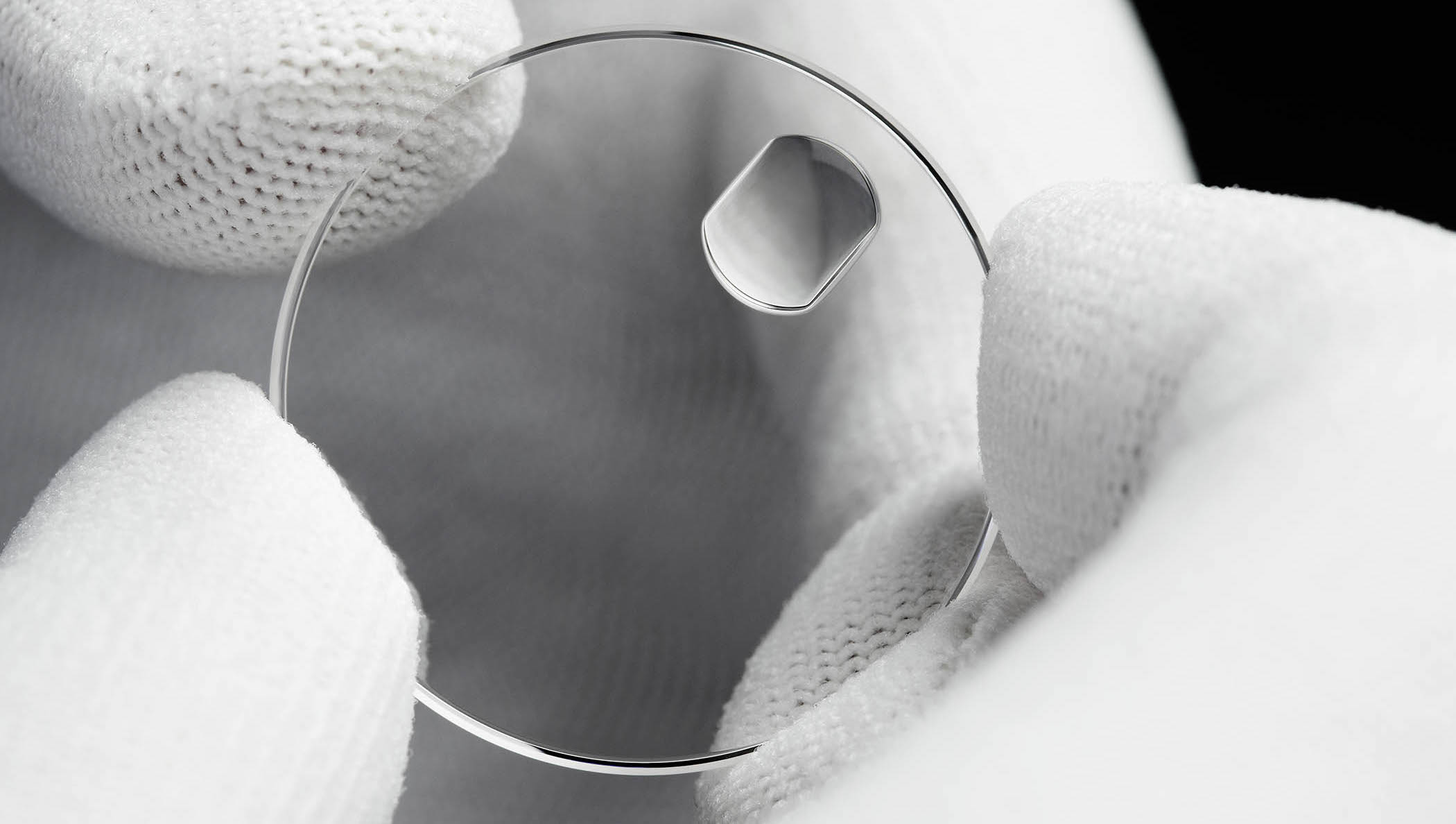
When did Rolex Change to Sapphire crystal? A Guide to Rolex Crystals
Today, the vast major of high-end watches use sapphire crystals due to the benefits they bring to a watch. They are virtually scratch-proof, they are durable, and they will last for lifetimes most of the time.
But the fact is that the watch industry, or Rolex, has not used sapphire crystals forever. In fact, for the majority of the time watches have been manufactured, they have used other materials than sapphire crystal.
When did Rolex change to sapphire crystal?
Rolex started changing to the sapphire crystal in the early 1970s. The early period consisted mostly of an experimental period but the first Rolex that used sapphire crystal was Ref. 5100. This was the gold quartz Rolex with a Beta 21 quartz movement which was introduced in 1970. The use of sapphire crystal makes sense as it was very innovative at the time, just like sapphire crystal which really hadn’t been used a lot for watches due to its hard-to-craft nature.
Following, the reference 1530, 1630, and 1831 all got a sapphire crystal.
Between the years of 1978 and 1984, Rolex started phasing out the previous crystals used and replacing them with sapphire crystals for most of its models.
In total, it took Rolex almost 13 years to phase out the acrylic glass to sapphire crystal. From 1978 to 1991, it took Rolex nearly 13 years to replace acrylic glass face with sapphire crystal.
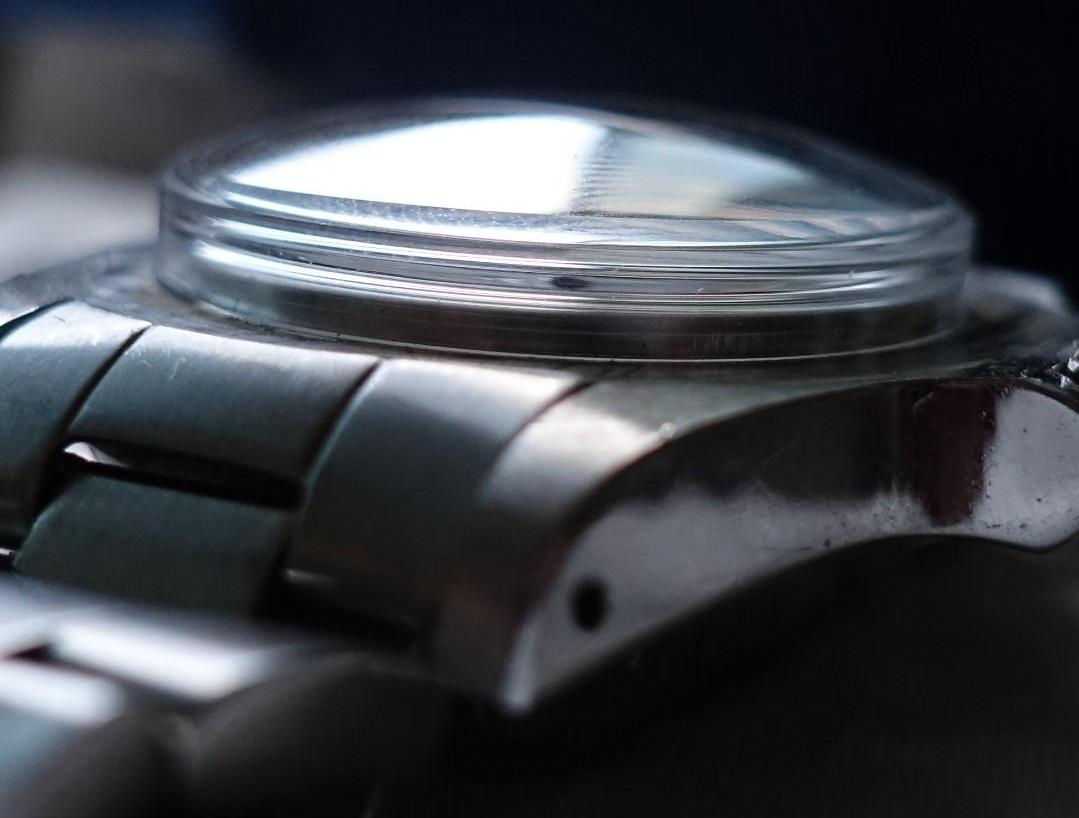
In 1978, the Day-Date and Datejust models at the time, reference 16018 and 16019, including the OysterQuartz started to use sapphire. As Rolex started to introduce the sapphire crystal to more and more models, it went to show that the crystal had passed the test and did exactly what Rolex expected it to do.
In 1981, the Submariner reference 16800 & 16808, Sea-Dweller reference 16660, and GMT-Master reference 6758 all got a sapphire crystal for the first time.
Following that, the GMT-Master II reference 16760, Explorer II reference 16550, as well as the Submariner 16803 got the sapphire crystal in 1984.

When did all Rolex watches have sapphire crystal?
In the late 1980s, all Rolex watches were equipped with a sapphire crystal.
The sapphire crystal was something new and modern, and it reflects Rolex moving into a modern era in a way.
Seen below is a list of when different models got the sapphire crystal, also depending on the metal:
When different Rolex models got Sapphire Crystal
- 1970 – QUARTZ 5100
- 1975 – DATE 1530
- 1977 – OYSTERQUARTZ
- 1978 – DAY-DATE 18038 (platinum & gold)
- 1978 – SEA-DWELLER 16660
- 1979 – SUBMARINER DATE 16800
- 1981 – Sea-Dweller 16660
- 1981 – GMT-Master 6758
- 1983 – GMT-MASTER II 16760
- 1984 – GMT-Master II 16760
- 1984/1985 – Explorer II 16550
- 1988 – DATEJUST 16200
- 1988 – GMT-MASTER 16700
- 1989 – EXPLORER 14270
- 1989 – AIR-KING 14000
- 1990 – SUBMARINER 14060
- 1988 – Cosmograph Daytona. (Steel, Rolesor, Gold)
- By 1991, the Rolex Perpetual was the last watch to possess an acrylic crystal.
Further details can be found in the graph below:
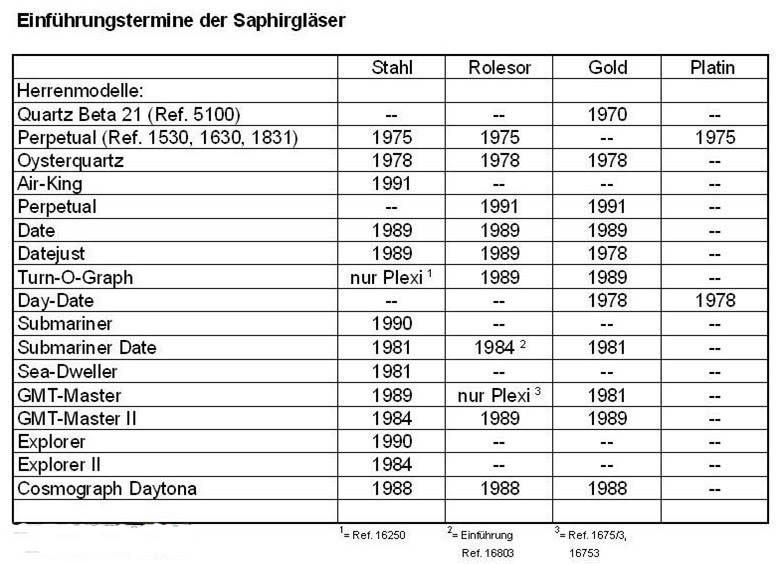
Rolex sapphire crystal and other glass
Now, let’s talk a little bit about Rolex crystals and what evolution has looked like.
The fact is that the crystal is one of the parts that is the most subject to outside force, stress, and potentially dangerous situations. It is large, and it sits unprotected on the outside of the watch. This means that it is easy to hit something, or potentially scratch it. But fortunately, there are materials that are less prone to scratches than others, and this is why the sapphire crystal came into the picture.
Having a clear crystal is absolutely crucial in order to be able to read the time effortlessly and properly.
At the same time, there is a balance between having a watch that offers perfect see-through characteristics and offering enough durability to not easily get scratched or damaged.
The watch industry has struggled with watch crystals for decades, not finding a material that is suitable enough. In the earliest days of watchmaking, when pocket watches were the focus, they used regular glass. The problem with this is that it is extremely delicate, especially when made as thin as a crystal for a watch.
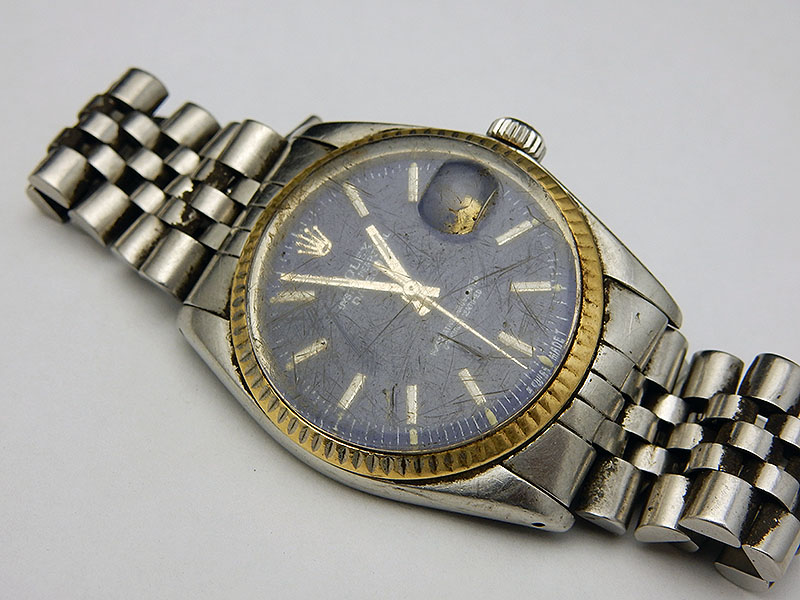
But as wristwatches came around, people started realizing that glass wasn’t an ideal material, especially considering a wristwatch is far more exposed to potentially dangerous that can damage the glass compared to a pocket watch that sits relatively safely inside the jacket.
Therefore, as the popularity of wristwatches started increasing, the watch industry started using a different material – acrylic glass.
More and more manufacturers moved towards acrylic glass for their watches, including Rolex. The benefit of acrylic is that it does not shatter or break in the same way as glass, due to its softness. The downside, of course, is that because the material is so soft, it tends to scratch very easily. In fact, even just the touch of your cuff can create small scratches on the crystal.
So with the introduction of acrylic, they had solved one problem, of shattering glasses, but they had to create another, which involved easily scratched crystals.
Over time, acrylic crystals would get so many scratches that it would make it more difficult to read the time – even though it is possible to polish them up or easily replace them.
Why did they not use sapphire crystal earlier?
Well, the answer is quite simple.
In the beginning, the material didn’t really exist. Then when the material became more common, the watch industry still had the problem that sapphire crystal is extremely hard, so shaping it into a crystal that can be fitted on a watch demands great skill, knowledge, and methods. In fact, on the Mohs scale, only diamonds are a harder element.
But Rolex’s constant development, research, and innovation led to the company introducing the first sapphire crystal in 1970. Then, because of the extraordinary properties the crystal offered, they introduced it for the rest of the watches in the collection over time.
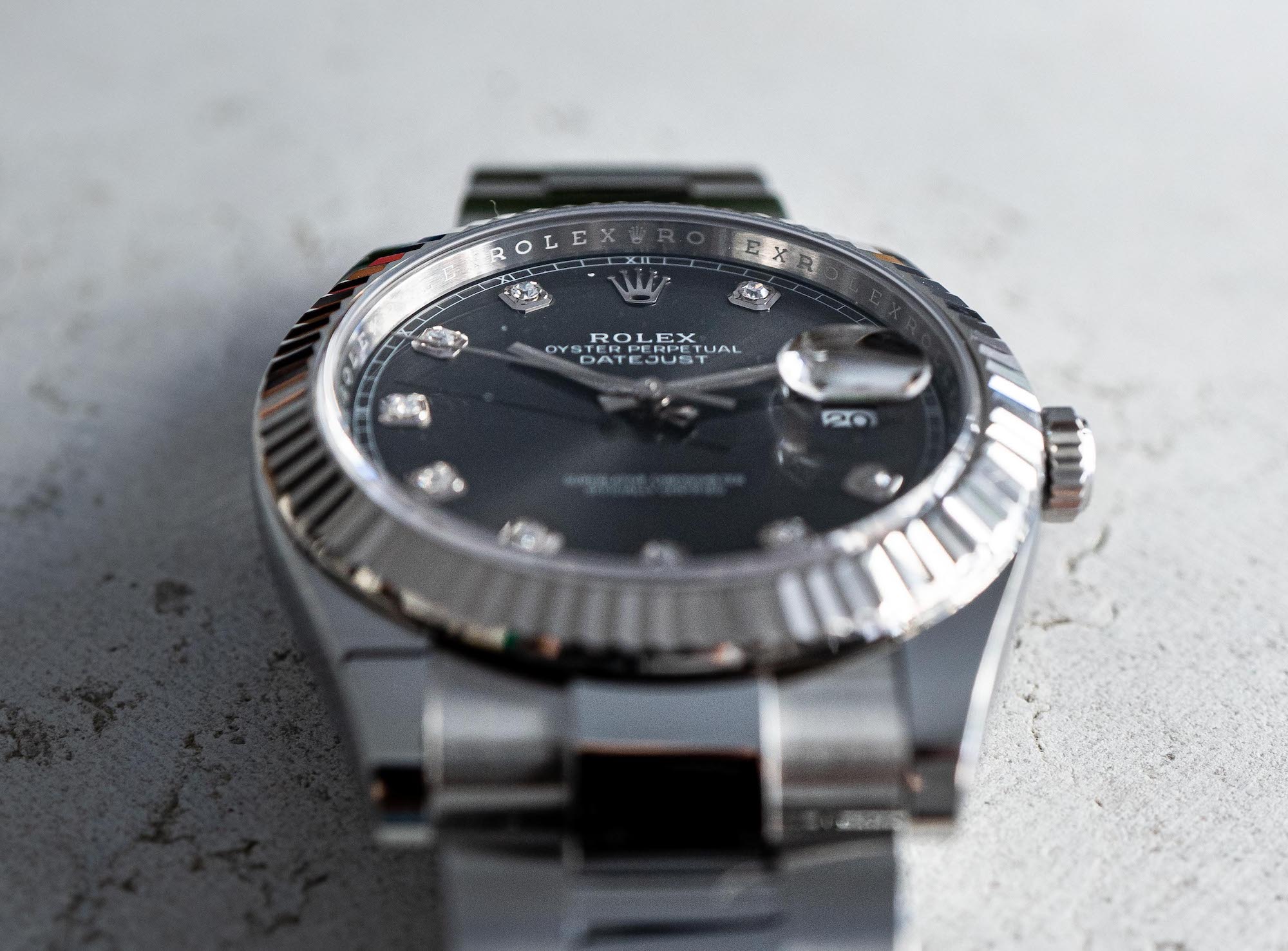
Sure, there are some advantages to an acrylic crystal instead of a sapphire crystal, but clearly, Rolex has weighed the pros and cons and come to a conclusion.
The benefits of acrylic are that it is very durable, and resists most bangs and hits. However, it is far from scratch-resistant. This means you need to either polish the acrylic crystal regularly or even have it replaced over time. The benefit is of course that the acrylic crystal does not shatter the same way a sapphire crystal does.
Can Rolex sapphire crystal scratch or break?
Yes, a Rolex sapphire crystal can both shatter or scratch.
While a sapphire crystal is extremely hard and durable, it can scratch, and even shatter. Some people believe that the sapphire crystal can only be scratched by a diamond, but this is not the case. Shall you accidentally touch your watch against a stone wall, or hit it into something hard, the crystal may or may not get scratched. If you are unfortunate, the crystal can get a chip in it. This can sometimes be seen on the side of the crystal.
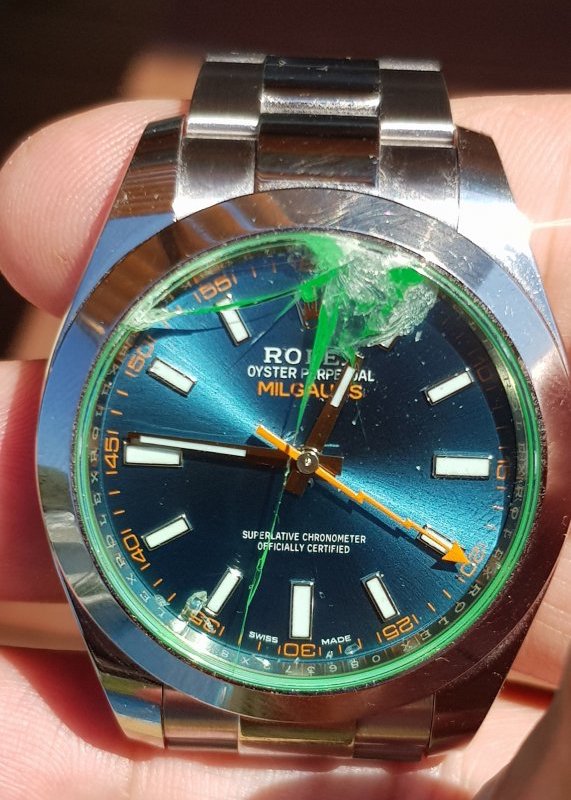
A downside of the Rolex sapphire crystal is that, if you’re unfortunate, the whole crystal can shatter. The worst part is not that you have to change your crystal but that small crystal shards can find their way into your movement and heavily damage it. Furthermore, the shards can also cause scratches on your dial. This is why it is very important that if your crystal shatters, quickly pull out the crown on the watch. This will stop the movement, and prevent the hands from moving and potentially scratching the whole dial.





What about anti reflective saphire ? Please explain me if Rolex use it.
Hi,
Please refer to our complete guide regarding Rolex anti-reflective coating here:
https://millenarywatches.com/rolex-anti-reflective-coating/
Kind regards,
Millenary Watches
I have a Rolex Day Date and a 1952 Rolex Perpetual both with acrylic glasses. Can I replace it with sapphire glass?
Hi,
Yes, it’s possible to replace with sapphire glass. However, Rolex would not do this as they will only use the parts that are correct for this model. You can go to an independent watchmaker and they will definitely be able to help with this.
Kind regards,
Millenary atches